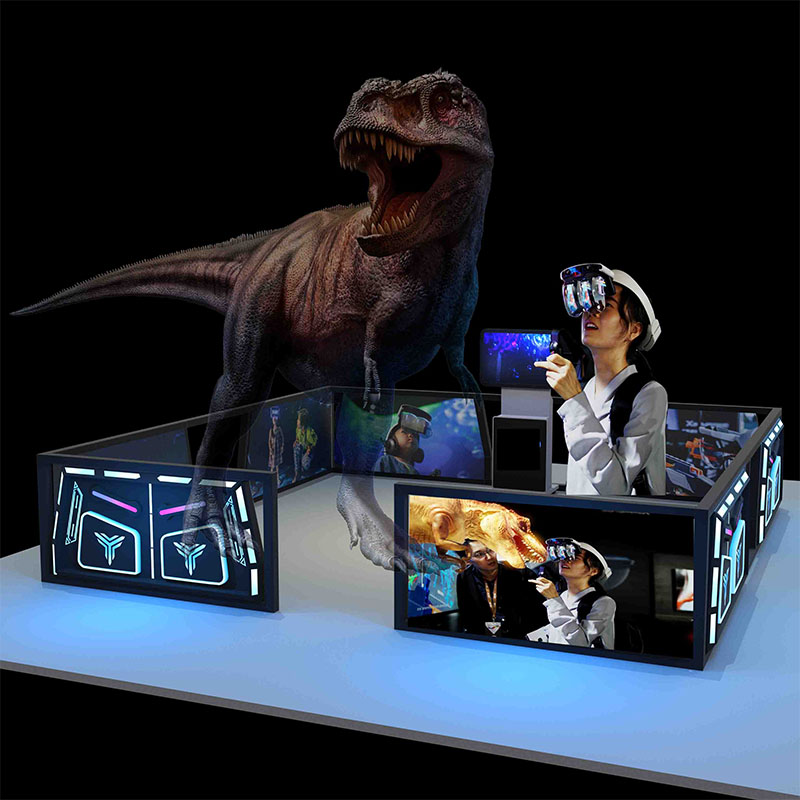Mix Reality Games: Bridging the Gap Between Real and Virtual Worlds
In a rapidly evolving digital landscape, mixed reality games have emerged as a captivating and transformative form of entertainment. Blending elements of the real and virtual worlds, these games offer players a unique and immersive experience that transcends traditional gaming boundaries. In this article, we will explore the world of mixed reality games, their technology, applications, and their potential to reshape the future of interactive entertainment.
Understanding Mixed Reality Games
Mixed reality (MR) games are a hybrid of augmented reality (AR) and virtual reality (VR) experiences. They combine real-world elements and digital content to create a seamless and interactive environment where players can engage with both physical and virtual objects. MR games are typically played using specialized headsets or mobile devices equipped with cameras and sensors, which allow for the blending of real-world surroundings with computer-generated imagery.
One of the defining features of MR games is their ability to anchor virtual objects to the real world. For example, a player might see a digital character walking around their living room or encounter virtual creatures hiding in a park. This integration of digital content into the physical environment enables a level of immersion and interactivity previously unattainable.
The Technology Behind MR Games
The technology that powers MR games is impressive and continually advancing. Key components include:

Headsets: Specialized MR headsets, like the Microsoft HoloLens or Magic Leap One, feature transparent displays that allow users to see both the real world and digital overlays simultaneously.
Sensors: MR devices are equipped with cameras and sensors that track the user's movements and surroundings. This data is used to position and interact with virtual objects in real-time.
Spatial Mapping: MR headsets use spatial mapping technology to understand the physical environment. This enables virtual objects to interact with real-world surfaces, creating a more convincing illusion.
Gesture Recognition: Some MR systems incorporate gesture recognition, allowing users to control the virtual environment through hand movements and gestures.
Applications of MR Games
The versatility of mixed reality games extends beyond traditional gaming experiences. Here are some of the notable applications:
Gaming: MR games offer a new level of immersion in traditional video games. Players can engage in epic battles, solve puzzles, and explore fantastical worlds within their own homes or outdoor environments.
Education: MR has enormous potential in education. Students can interact with historical figures, explore geological formations, or dissect virtual organisms, making learning more engaging and interactive.
Training: Many industries, such as healthcare, aviation, and the military, use MR simulations for training purposes. Surgeons can practice complex procedures, pilots can simulate flights, and soldiers can train for combat scenarios in a safe and controlled environment.
Entertainment: MR games are also being used in theme parks and entertainment venues to create interactive attractions and experiences. Visitors can embark on immersive adventures that blur the lines between fiction and reality.
Challenges and Future Prospects
While mixed reality games hold immense promise, they face several challenges, including:
Cost: High-quality MR devices can be expensive, limiting accessibility for some users.
Content Development: Creating compelling and immersive MR experiences can be complex and resource-intensive.
Safety and Privacy: Ensuring the safety and privacy of users while they interact with digital content in the real world is a critical concern.
Despite these challenges, mixed reality games are likely to become increasingly prevalent in the coming years. Advancements in technology, coupled with growing interest from developers and consumers, will drive the expansion of the MR gaming ecosystem.
Conclusion
Mixed reality games represent a thrilling convergence of the physical and digital realms. They provide a unique platform for entertainment, education, training, and more. As the technology continues to evolve and become more accessible, mixed reality games have the potential to transform the way we learn, play, and interact with our environment. Whether it's battling digital foes in your living room or exploring a virtual museum in your backyard, mixed reality games are poised to redefine our relationship with technology and reality itself.


